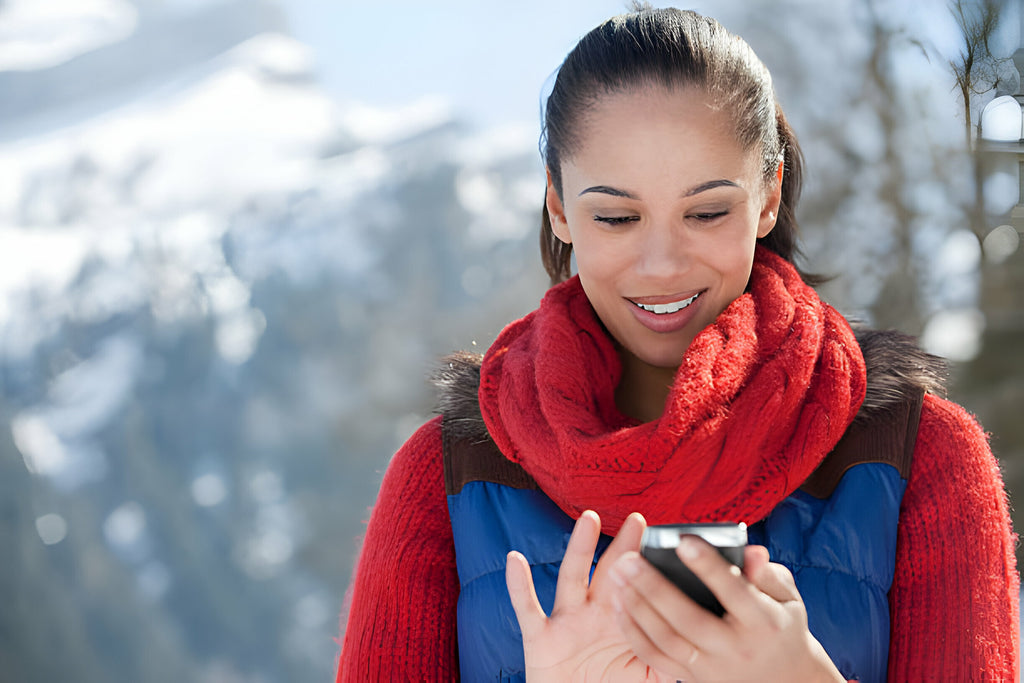Using Apple Phones in Europe: Connectivity Essentials
Greetings, fellow wanderers! If you're anything like me, the thought of being disconnected in a foreign land is akin to leaving your passport at home. Fear not, for today we embark on a digital journey to unravel the mysteries of using your cherished Apple phone in the captivating realm of Europe.
Understanding Phone Compatibility
Europe, a patchwork quilt of cultures and landscapes, mirrors its diversity in mobile network standards. To ensure your Apple phone seamlessly dances to the European beat, let's dive into the compatibility nuances.
European Network Standards
Europe, unlike your quirky Uncle Larry, can't agree on a single standard. We've got GSM and CDMA, two rivals engaged in a dance-off. GSM reigns supreme in most European countries, so if your Apple phone is locked to CDMA, you might face some connectivity hurdles.
LTE Bands in Europe
Ah, the symphony of LTE bands! Europe has a spectrum of frequencies, and your Apple phone should be fluent in them for optimal data speeds. Before you embark, check if your iPhone is well-versed in the European LTE dialect.
Apple Phone Models and Compatibility
Now, not all iPhones are born equal in the eyes of European networks.
Latest iPhone Models
If you're flaunting the latest iPhone, consider yourself the VIP of the connectivity party. The newer models usually come with a broader range of frequency support, ensuring you're not left tapping your screen in frustration.
Older iPhone Models
However, if you're rocking a vintage iPhone, fear not! Older models can still join the European soiree with a little help – unlocking.
Unlocking Your Apple Phone for International Use
Ah, the key to global connectivity – unlocking your device. Think of it as giving your phone a passport to wander freely through European networks.
SIM Card Compatibility
Europeans love their nano-SIMs and eSIMs, and your Apple phone should be open to these flirtations. Ensure your device is not tied down by carrier restrictions, and if it is, set it free!
Checking IMEI Status
IM-what now? Your iPhone's IMEI is its unique identifier, like its fingerprint. Before boarding your plane, check if your device's fingerprint is clean, i.e., not blacklisted. A blacklisted phone is like a traveler on a no-fly list – not going anywhere.
Roaming vs. Local SIM Cards
So, you've successfully given your Apple phone a taste of freedom through unlocking. Now, let's navigate the labyrinth of staying connected in Europe – should you rely on the comforting embrace of roaming or embark on the adventure of local SIM cards?
Roaming with Your Apple Phone in Europe
Ah, roaming – the jet-setter's safety net. It allows your phone to hold hands with your home carrier even when you're gallivanting across European borders. But, like all relationships, it comes with its pros and cons.
Pros:
- Convenience: No need to fiddle with different SIM cards; your home network cradles you wherever you go.
- Familiarity: Your digits remain the same, ensuring your contacts don't think you've mysteriously disappeared.
Cons:
- Costs: Roaming charges can morph into budget-devouring monsters. Be wary of the financial abyss!
- Data Speeds: The speed might be akin to a tortoise on a coffee buzz. Not the best for those Instagram-worthy moments.
Using Local SIM Cards
Now, here's where the adventure begins – the allure of local SIM cards. It's like having a secret handshake with the country you're exploring, giving you VIP access to local networks.
Purchasing Local SIMs
Airports, street kiosks, or even that quirky corner store – acquiring a local SIM card is often as easy as ordering a croissant in Paris. Pop it in, and voilà, you're part of the local mobile scene.
Data Plans and Top-up Options
Local SIM cards come with an array of data plans, from a sprinkle to an all-you-can-eat buffet. Choose wisely based on your data appetite. And if you run low, topping up is usually a breeze, sparing you from any digital withdrawal symptoms.
Wi-Fi Connectivity and Alternatives
Ah, the backbone of every digital nomad's survival kit – Wi-Fi. Navigating Europe's Wi-Fi landscape is like choosing between a scenic train ride and a charming canal tour – there are choices aplenty, and each has its unique charm.
Leveraging Wi-Fi Networks
Hotel Wi-Fi and Security: Your temporary abode, aka the hotel, often boasts Wi-Fi prowess. But before you start binge-watching your favorite series, remember: not all Wi-Fi networks are created equal. Ensure your connection is encrypted, protecting your digital musings from prying eyes.
Public Wi-Fi Etiquette: Public Wi-Fi is like a bustling European market – tempting but not without risks. Use a virtual private network (VPN) when traversing public networks, shielding your digital transactions and ensuring your cybercastle remains impenetrable.
Personal Hotspot Usage
Now, let's talk about turning your Apple phone into a hotspot – your personal beacon of connectivity.
Data Consumption Tips: While your hotspot is a godsend, it can be a hungry beast. Keep an eye on your data consumption, especially when indulging in data-intensive activities. Nobody wants to be caught with an empty data pouch in the midst of a Euro-travel extravaganza.
Navigation and Mapping Apps
Lost in the maze of European streets? Fear not, for your Apple phone can be your trusty guide.
Apple Maps in Europe
Offline Maps and Navigation: Before venturing into the unknown, preload your Apple Maps with offline maps. It's like having a secret treasure map, ensuring you won't lose your way even in the densest European forests of cobblestone streets.
Alternative Mapping Apps: While Apple Maps is a worthy companion, don't hesitate to flirt with alternatives like Google Maps or Maps.me. Each has its unique strengths, and variety, as they say, is the spice of navigation.
VoIP Calls and Messaging Apps
The allure of FaceTime and iMessage might be strong, but let's explore the realm of VoIP (Voice over Internet Protocol) and messaging alternatives.
Facetime and iMessage in Europe
Over Wi-Fi vs. Cellular Data: While FaceTime and iMessage are excellent choices, they tend to devour data. Switch them to Wi-Fi mode to avoid bill shock – your bank account will thank you later.
WhatsApp and Other Alternatives
Dabble in Diversity: Embrace the diversity of messaging apps like WhatsApp, Telegram, or Signal. Not only do they offer cross-platform compatibility, but they also let you stay in touch with friends, family, and the occasional pen pal without breaking the bank.
Wi-Fi Connectivity and Alternatives
Ah, the quest for a stable internet connection – the modern-day traveler's Holy Grail. In Europe, where history meets innovation, ensuring your Apple phone is well-connected is paramount. Let's dive into the ocean of Wi-Fi connectivity and explore alternative options to keep you seamlessly linked.
Leveraging Wi-Fi Networks
Europeans adore their coffee, and with it, cozy cafés with complimentary Wi-Fi. Your hotel, too, is likely to be a Wi-Fi haven. But before you immerse yourself in the online world, here are some pointers:
Hotel Wi-Fi and Security
Sure, that hotel Wi-Fi name might sound tempting, but ensure it's the real deal. Cybersecurity is the unsung hero of digital travel – use a VPN for an extra layer of protection.
Public Wi-Fi Etiquette
Public Wi-Fi is like a communal campfire; everyone wants a piece. Be considerate and avoid streaming your favorite series at max resolution. Your fellow travelers will thank you.
Personal Hotspot Usage
Your Apple phone isn't just for selfies and food pics; it's a mobile hotspot waiting to be unleashed. Personal hotspots are a lifesaver in areas with shaky Wi-Fi signals or when you're on the move.
Data Consumption Tips
Be mindful of your data diet. Turn off automatic app updates and background app refresh – your data plan will thank you later. A data-savvy traveler is a happy traveler.
Thanks for visiting our blog, are you planing to travel to Europe? Check out our Europe SIM card and our Esim Europe before you take off.

Navigation and Mapping Apps
Lost in the enchanting labyrinth of European streets? Fear not, for your Apple phone can be your trusty guide. Let's explore how to navigate with finesse and flair.
Apple Maps in Europe
Apple Maps has come a long way from its early hiccups. Download offline maps for your destination, ensuring you won't be lost in translation even if your data connection decides to take a siesta.
Offline Maps and Navigation
Before you venture out, preload your maps. Nothing says 'tourist' like someone staring at their phone trying to load a map in the middle of a bustling square.
Alternative Mapping Apps
If Apple Maps isn't your cup of tea, fear not. Google Maps and other alternatives offer robust navigation, ensuring you never miss that hidden gem or the quaint little café around the corner.
VoIP Calls and Messaging Apps
Communication, the lifeline of any journey, transcends borders with the magic of Voice over Internet Protocol (VoIP) calls and messaging apps. Let's unravel the possibilities and ensure your Apple phone becomes a beacon of connection without the hefty international calling fees.
Facetime and iMessage in Europe
If you're an Apple aficionado, Facetime and iMessage are your loyal companions. But, here's the catch – they work best over Wi-Fi. Ensure you're not unknowingly draining your data plan when sending those hilarious cat GIFs.
Over Wi-Fi vs. Cellular Data
Using Facetime or iMessage over Wi-Fi ensures crisp calls and lightning-fast messages. However, if Wi-Fi is elusive, be cautious of switching to cellular data – international data charges might sneak up on you like a ninja.
WhatsApp and Other Alternatives
WhatsApp, the universal language of global communication! Almost everyone has it, and it's data-friendly. Plus, with features like voice calls and video chats, you're not just limited to text messages.
Over Wi-Fi vs. Cellular Data
Similar to Facetime and iMessage, using WhatsApp over Wi-Fi is the golden ticket. But if you must resort to cellular data, keep an eye on your usage to avoid bill shock.
Security and Privacy Considerations
In the vast digital landscape, a vigilant traveler is a smart traveler. Let's discuss how to safeguard your Apple phone and personal information.
VPN Usage for Travelers
A Virtual Private Network (VPN) is your digital shield. Whether you're checking your bank balance or sharing travel pics, a VPN ensures your data remains your digital fortress.
Protecting Personal Information
Europe is a treasure trove of experiences, but beware of digital pickpockets. Avoid connecting to unsecured Wi-Fi networks, and always double-check your VPN connection before diving into the online realm.
Choosing the Right VPN Service
Not all VPNs are created equal. Invest in a reliable VPN service with servers in your home country and the region you're exploring. This ensures smooth sailing through digital borders.
Emergency Services and Contacts
While we're on the topic of staying connected, let's not forget the basics – emergency services and contacts.
Accessing Emergency Services
Different European countries have different emergency numbers. It's not 911 everywhere. Familiarize yourself with the local emergency number, ensuring you're prepared for any unforeseen circumstances.
Local Emergency Numbers
Whether it's 112 in most EU countries or 999 in the UK, knowing the local emergency number is as crucial as knowing where to find the best gelato.
Keeping Emergency Contacts Handy
Program local emergency numbers and your embassy's contact details into your Apple phone. In times of need, a quick dial can be your lifeline.
As we reach the end of this odyssey through the digital realm of using your Apple phone in Europe, remember, technology is a tool, and wielding it wisely enhances your travel experience. Stay connected, stay secure, and may your European adventure be filled with digital discoveries!
In this interconnected age, your Apple phone is more than a device; it's your digital sidekick, navigating the European landscape with finesse. Whether it's unlocking the potential for global connectivity, embracing the local charm with a new SIM card, or ensuring your data stays secure, your journey is enhanced by the power of technology. As you embark on your European escapade, may your Apple phone be your trusted companion, seamlessly bridging the gap between exploration and connection. Before you take off make sure to check with local government of the travel status.
FAQs: Frequently Asked (and Answered) Questions
Can I use my Apple phone in Europe without unlocking it?
While it might work, unlocking is recommended for optimal functionality and to avoid potential issues.
Are all European countries using the same mobile network standards?
No, there are variations. Ensure your Apple phone supports the specific standards of the country you're visiting.
Can I purchase a local SIM card at the airport upon arrival?
Yes, many airports have kiosks or stores offering local SIM cards, making it convenient for travelers.
Is using public Wi-Fi safe for sensitive transactions on my Apple phone?
It's advisable to use a VPN when accessing sensitive information over public Wi-Fi networks to enhance security.
How can I check if my iPhone is unlocked for international use?
You can verify the unlocking status in your phone settings or contact your carrier for confirmation.









